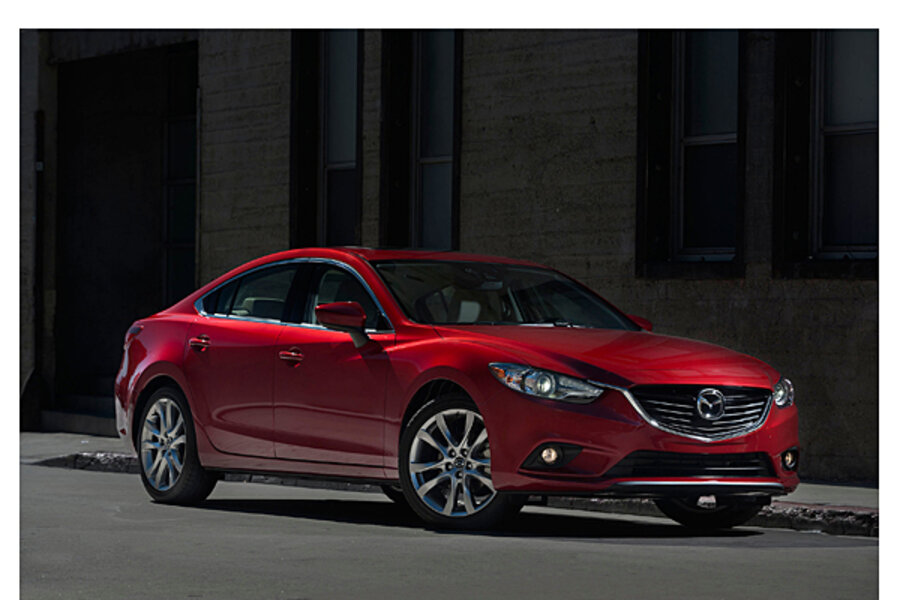2014 Mazda6: Impressive mileage, sporty package.
Loading...
Mazda has released gas mileage numbers for its top-of-the-line, mid-size 2014 Mazda6—with the GT Technology Package that arrives in dealerships beginning this month—and they're better than some you'll find in efficiency-minded compacts or subcompacts.
How does 40-mpg highway, and 32 mpg in the EPA Combined cycle, sound for one of the sportiest-driving mid-size sedans on the market—one that's not a hybrid, or a diesel?
The Mazda6 is the first Mazda globally to pack the automaker's new i-ELOOP (Intelligent Energy Loop) system, designed to work as part of the automaker's SkyActiv engineering initiative, which aims to maximize efficiency through a clean-slate redesign of core components.
While the gasoline version of the 2014 Mazda6 earns 26 mpg city, 38 highway in the EPA cycle, the i-ELOOP version earns 2 mpg better in both the city and highway cycles—for a net 28 mpg city, 40 mpg highway.
32-mpg Combined in a mid-size sedan; no clunky hybrid battery pack
This brings a phenomenal 32-mpg Combined rating and a 656-mile highway range—without weight-adding (and potentially fun-robbing) battery hardware.
Mazda calls i-ELOOP the world's first capacitor-based brake energy regeneration system, but put simply, this is a system that manages to pack away energy, and release it smartly, with a very lightweight component set. Like other smart-alternator systems, load from the alternator is reduced at some times to aid efficiency, and energy can quickly be released from the system's electric double-layer capacitor to keep power flowing to vehicle accessories.
What makes i-ELOOP a step up from some of those other systems is that the energy can be release from the capacitor so quickly so as to power all electrical mechanisms in the vehicle—everything from the power steering to the climate-control fan—reducing the alternator load to near zero during a quick burst of acceleration. For battery storage, energy release and energy storage are slower.
Not just a way to game the EPA tests
How might the system perform in real-world driving? Earlier this year, a Mazda spokesman noted that real-world gains from the system may be greatest in highway-commuting conditions, where the load might most be reduced. So in other words, this is a system that will benefit American-style driving, not necessarily just the EPA numbers. We of course caution that we'll need to get back to you with some actual real-world test results, but considering the stellar returns of Mazda's recent SkyActiv powertrains, it's promising.
Capacitors can pack a charge in quickly and discharge rapidly when needed; and they don't deteriorate in prolonged use, Mazda notes.
I-ELOOP is only offered in the 2014 Mazda6 Grand Touring with the Technology Package—also including Radar Cruise Control (MRCC), Lane Departure Warning (LDW), High Beam Control (HBC), and Forward Obstruction Warning (FOW). Mazda has put a price on it—$2,080—so a fully kitted-out Mazda6 GT Technology Package model will run you $32,370.
For fuel efficiency, Mazda has another rival of sorts, from within its own ranks. How will the upcoming 2014 Mazda6 Diesel compare for price and fuel economy? We're curious; but we think shoppers will find it thrilling that there are so many efficient yet fun-to-drive options.







